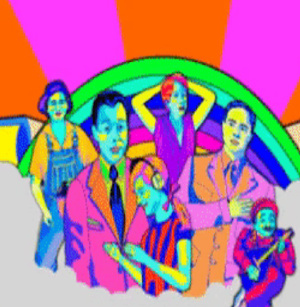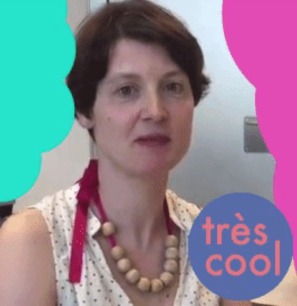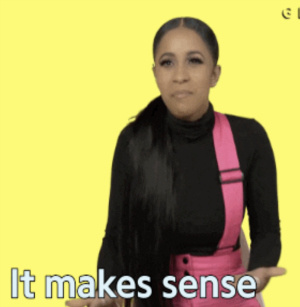How to write collaboratively
This week, Enric Senabre, a researcher at the Internet Interdisciplinary Institute (IN3) of the Open University of Catalonia (UOC) shares with us his experience with using co-design techniques and digital tools to facilitate collaborative writing.
We scientists often write together. Most published papers have two, three or many co-authors. Yet, there is little systematization or teaching on how to write together – no lists of good practices, no manuals, no courses, in most Universities at least.
For early career researchers, like myself, this is a huge problem. How does one start writing a paper with others? Experienced researchers have taught themselves how to work with others, ‘learning by doing’. But they rarely reflect on what works well and what does not. As a result, not only do they not improve how they work together, but they are not capable of passing knowledge to their students.
The way we write scientific and research papers is changing. We use new tools, and follow different social processes. For example, many of us use attached documents via emails less frequently and instead collaborate more directly with online text editors – pads, googledocs or shared dropbox folders. Intensive in-person writing meetings or retreats are becoming commonplace (see for example the pioneer project Book Sprints)
What is occurring is not a mere change in the tools we use, but in the ways we interact and work with one another. I have had many different experiences collaboratively writing both, academic pieces and wikis. I want to share here, a recent collaboration that may be replicable. But first, a word on how I came to co-writing.
Researching co-writing
I work at the action-research group Dimmons.net of IN3 at the Open University of Catalonia. My PhD project is on collaborative research practices.
One of our collaborations is with Teixidora, an online platform and community of practice in Barcelona. It has developed novel ways for documenting meetings and events by activists working on the city’s commons.
Teixidora combines social processes with technological tools (Etherpad, Mediawiki, Quitter and Twitter). It facilitates collaborative note-taking during meetings, and allows participants to write and organise the information they produce together – during and after the meetings. The tool was developed in response to the need for more effective ways of taking notes during meetings, and compiling information in ways that could be made intelligible and shared by everyone, beyond the idiosyncrasies of each note-taker.
You can read more about the Teixidora project and the research we conducted here. The linked paper includes a formal review of the current state of the art in collaborative writing for those who are interested. In this blog post, I want to share the process of how we wrote the paper together.
The paper on Teixidora’s collaborative process was the product of collaborative writing between myself, Mònica Garriga, David Gòmez and Mayo Fuster. By writing our own paper, we put into practice, in an academic setting, what we were observing (and found it worked well) in a different domain.
Everything good in life starts with a post-it
Mònica and David, my co-authors, co-founded and led Teixidora. Mayo and myself were users and observers of the platform. The four of us would meet from time to time. One day, about a year ago, we had the idea of writing something on Teixidora, together.
Our interests were different, but converged. Mònica and David had a deep understanding of the project - its evolution and its dynamics – and they wanted to share their experience with others while developing and improving the platform. We were all interested in exploring the connection of the project to other collaborative dynamics around the commons and its implications for theories of knowledge generation.
Before meeting and kick starting the paper, we exchanged literature we had found on collaborative writing. We did this by opening a dedicated chat in Telegram for coordination, a platform we continued using throughout the project.
One nice morning, we met in a quiet apartment with a big table, plenty of coffee and lots, seriously lots, of post-it notes. The idea was the following: first we would brainstorm the different elements we found worth addressing in the paper, then we would cluster and sequence these elements, and produce the first outline of the paper’s argument.
We used four different colours of post-its: yellow, orange, green and pink. Each corresponded to a different set of questions.
On yellow post-its we wrote our initial concerns – what we wanted to learn, and why we were doing this research.
On orange post-its we wrote questions that had to do with the academic positioning of our research – to which scholar debates was our research on Teixidora contributing to?
Green post-its registered empirical questions related to Teixidora as a tool – how it works, what it does, how effective it is.
Finally, on pink post-its, we identified the high-level topics or fields of research that our research was connecting to.
We started with the yellow post-its. Each one of us wrote some question about Teixidora and why we wanted to know more about it. One yellow post-it, for example, asked about the lack of systematic processes for community-driven documentation. Another post-it referred to the need for good open-source tools for making collaborative writing possible.
We placed all the yellow post-its on the table and discussed them one by one, while clustering them into connected topics. We then started writing questions, on green and orange post-its, as they were emerging. For example, on a green post-it one of us wondered what data could be extracted from Teixidora, on an orange post-it we registered the need to reflect on the state of the art in collaborative writing (what later became the third section of our published paper).
After a couple of hours and after constantly rearranging post-its, we created a flow of ideas, going from left to right, with groups of related questions. Below them there was a line with five pink post-its identifying the core areas to be addressed by the paper (citizen digital participation, online documentation, etc).
We took pictures of the process. Then, we collected the post-its and transcribed them on a shared online document. Moving the content from post-its lying on the table to a shared online document generated the first outline of the paper.
Getting agile with it
The hard work started. We had several important tasks to do before turning our list of ideas into a finished manuscript.
We worked together following the principles of agile management through a shared online tool, Kanboard, an open source alternative to Trello, with which some of you may be more familiar.
Agile management has its roots in software development, but through Trello, Kanboard and other similar tools it is now used for all sorts of projects. In our case, the project was the manuscript. Kanboard works with cards (as if they were online post-its). In each card we described a specific task and assigned it to one of the team members.
One task, for example, was to review specific literature, another one was to identify data sources within the Teixidora platform or to find potential journals where to publish the paper. We wrote down all possible tasks and screated a card for each of them.
Kanboard helped us visualise and keep track, collectively, of the things remaining to do. We organised the different tasks in columns, each corresponding to a stage of work. Each time a task was completed, it was moved from the “doing” to the “done” column. Visualising progress this way, we could follow how we were moving from the initial steps of an outline, to writing an abstract, completing a first draft of the paper, reviewing it, translating it from Catalan into English and finally submitting it to the journal.
It took us several months to complete the paper. Throughout this process we kept communicating online, via Telegram. But there was also one more moment when three of us met face-to-face, devoting a whole day to just writing the paper (actually not just writing, but there was also some pretty nice cooking and eating involved).
In agile management language, an intense period of working together geared towards completing a concrete task, is called a “sprint”. A project might involve one or more such sprints from beginning to end. Sprints can be face-to-face or via remote collaboration.
In writing a paper, face-to-face sprints are essential. Sitting one next to the other helps move ideas and text forward in ways that are not possible by remote collaboration alone. I would recommend more co-writing sessions than we had in producing this paper.
There are plenty of other ‘tricks’, ‘rituals’ or online and offline tools that can be explored and put into practice in collaborative writing. Our understanding and design of collaborative knowledge production is still at its infancy. But I am convinced that both research and scientific writing have lots to gain from bringing these processes - developed by activists and open software developers - to academia.
Do you think you could implement this style of collaboration with your colleagues on your next paper? Leave your comments below!

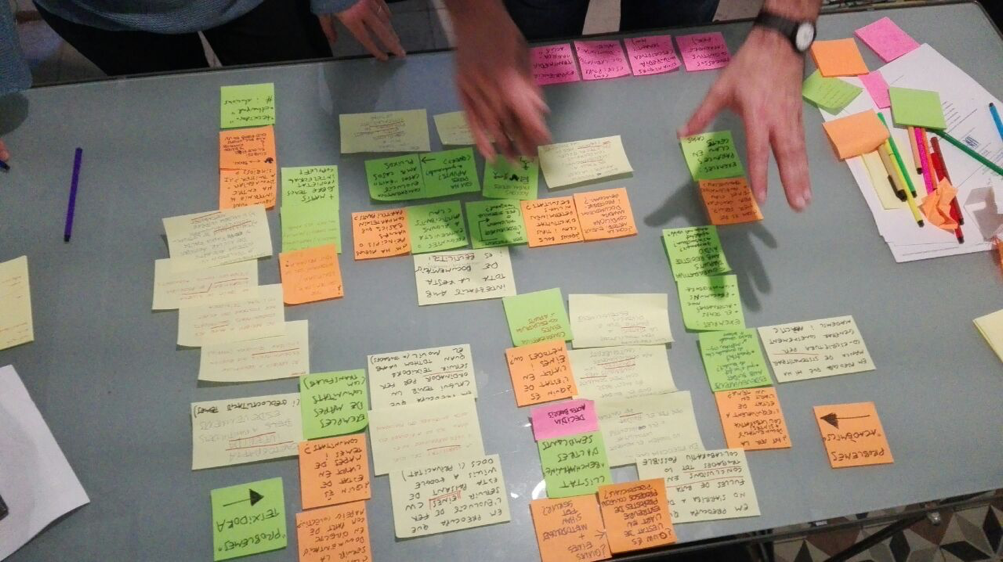
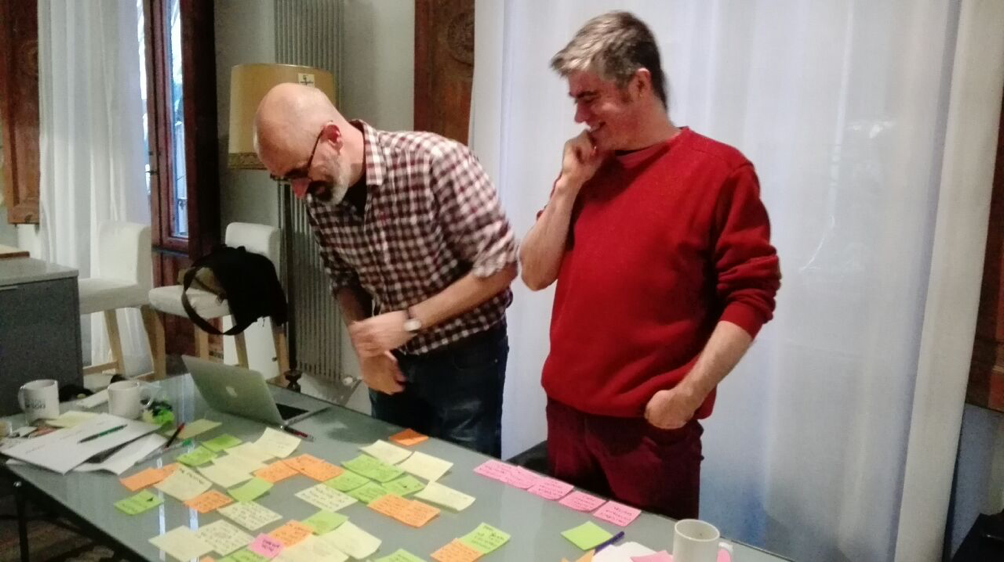 Final layout of questions and topics for the first draft of the paper.
Final layout of questions and topics for the first draft of the paper.
 Screenshot of the Kanboard tool
Screenshot of the Kanboard tool






